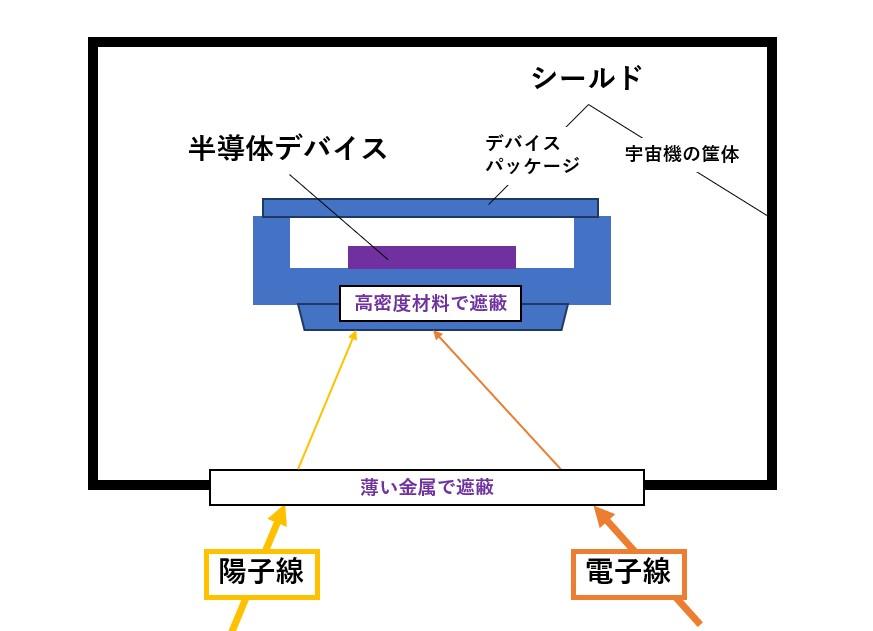How to prevent TID (total dose effect)?
Previously, as a phenomenon unique to the universe,
We introduced TID (Total Ionizing Dose effects) and SEE (Singe Event Effects).
These are events that may have a negative impact on semiconductors used in satellites launched into space.
What can we do as “countermeasures”?
This time, we will focus on “TID” and introduce countermeasures using typical shields.
▶ Click here for information on SEE measures
Protect semiconductor devices from TID! What is that method?
TID is a phenomenon that occurs when large amounts of radiation such as gamma rays, proton beams, and electron beams are incident on semiconductor devices.
Therefore, one countermeasure is to use a shield to prevent this radiation from entering semiconductor devices.

As shown in Figure 1, by using a thin metal (outermost layer) for the spacecraft casing in consideration of weight restrictions,
It fundamentally blocks a certain amount of electron beams and proton beams from reaching them.
However, the shield alone cannot cover everything, so it is necessary to further shield the electron beams and proton beams that reach the device package inside the case.
Therefore, choosing a device packaged with high-density materials can provide more effective shielding.
Macnica to go when it comes to TID (total dose effect)!
Did you understand the “TIDcountermeasures” introduced this time?
At Macnica, we provide support for TID resistance, testing, and evaluation of semiconductor devices.
For consultation, please contact us below.
Utilizing the know-how in space business that we have cultivated over many years, we support our customers with QE/FAE specializing in space.
▶About Macnica 's aerospace-related support
